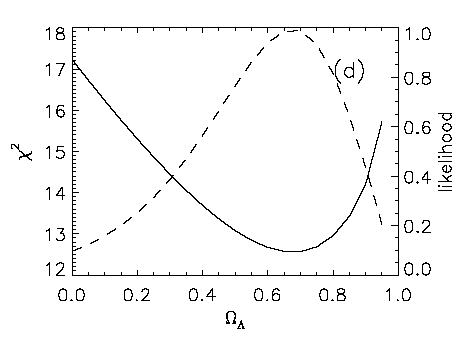
Current Status of ISW Effect Detection
Now that we have firmly established the theoretical background and the observational phenomenology of the integrated Sachs-Wolfe effect, it is time to see just what progress has been made towards its detection and what this means for the future experiments.
Detections of the ISW Effect
Since its suggestion by Crittenden and Turok (1996), several attempts have been made to detect the ISW effect both through the CMB temperature anisotropy power spectrum itself and through its cross-correlation with tracers of the large-scale structure gravitational potentials. We here present a brief review—which is by no means meant to be exhaustive, but merely representative—of these attempts.
Fosalba et al. (2003):
Fosalba et al. cross-correlate the SDSS Data Release 1 galaxy catalogue with the first-year full sky map WMAP data. Using Monte Carlo simulations of 200 realizations of the CMB sky they assign a significance of Δχ2=6.0 (3.0σ) and Δχ2=3.9 (2.0σ) to SDSS galaxy samples of high-z and all-inclusive respectively. Combining these samples and including small scale ISW effects, the obtained significance increases to Δχ2=18.9. This implies an ISW effect detection of 3.6σ. The best fit for the dark energy density yields ΩΛ≈0.8 with a 2σ range ΩΛ=0.69-0.87.

(Fosalba et al. 2003)
Nolta et al. (2003):
Nolta et al. cross-correlate the NVSS radio source catalogue with the first-year full sky map WMAP data. Also using 500 MC realizations of the CMB sky to assess the significance of their analysis results. They find evidence of the ISW effect at a significance of χ02=17.2 which corresponds to a 1.8σ detection (10 deg. of freedom). Noting that the current WMAP CMB TT power spectrum's first acoustic peak constrains the geometry of the universe, their analysis explores only the locus of values consistent with this observation, instead of the full parameter space. The difference in χ2 between ΩΛ=0 (no correlation) and ΩΛ=0.68 is Δχ2=4.7 which corresponds to a ΩΛ>0 preference at the 2.2σ level. There is, however, a degeneracy in the parameters here. ΩM≈1.3 and h≈0.3 is consistent with the WMAP TT and TE angular power spectra. However, when using these parameters (approximately) Nolta et al. finds that this model is disfavored by more than 3σ based on the cross-correlation.

(Nolta et al. 2003)
Scranton et al. (2003):
Scranton et al. cross-correlate the SDSS with the first-year full sky map WMAP data as well. Considering the three highest redshift samples used by the team, they exclude the null hypothesis (i.e. favor a ΩΛ>0) at the ≥90% level. Using the three highest redshift galaxy subsamples, cross-correlated with the 5 WMAP maps, Scranton et al. find a >95% confidence level rejection of a ΩΛ>0.
Boughn & Crittenden (2004):
Boughn & Crittenden cross-correlate two tracers of the large-scale structure: the HEAO1 A2 full sky hard x-ray map and the NVSS full sky radio galaxy survey. The results obtained imply a statistical significance of the detection of the ISW effect at ~2.5σ for both tracers. Using a maximum likelihood fit to both data sets yields a detection of 3.2σ of an ISW amplitude consistent with that predicted by hte ΛCDM model for cosmology.
Afshordi et al. (2004):
Afshordi et al. cross-correlate the WMAP full sky data with the full sky 2MASS near-infrared galaxy survey using the WMAP concordance model throughout. They report an ISW detection at the 2.5σ level, which again confirms the presence of a dark energy component of the universe.
Conlcusions
As we have seen, the several and various efforts at detecting the ISW effect have succeeded at ~2-3σ level. Discussions of the various approaches to error analysis, covariance matrix estimation, disputes, etc have been left out of the overview of the detection efforts, a perusal of the publications themselves will no doubt be more enlightening on that topic.
We have also seen that future of ISW effect detection and confident verification is close at hand. Between the Planck satellite and the possibility of polarization data yielding information on the CMB quadrupole, there will certainly be no lack of fresh data with which to cross-check the marginal detections made thus far.
The ISW effect remains one of the most direct and quantitative measure of the dark energy available to us today, and it is proving its worth.
•